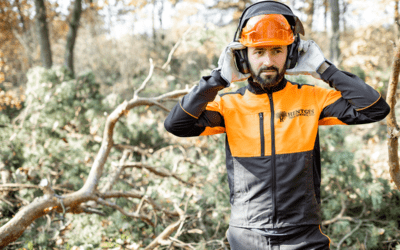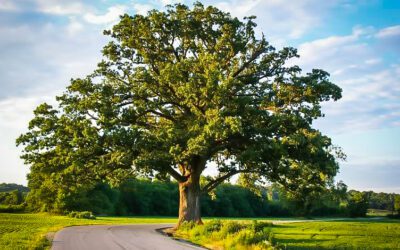Stress
Healthy, well-maintained trees growing on suitable sites will be able to minimize the extent of decay and other defects. Trees that are stressed have reduced energy reserves, and therefore have less ability to deal with wounds and decay. Most urban trees survive on construction-altered soils that may be compacted, poorly drained, high in clay, sand or gravel, very alkaline or littered with construction debris. Additionally, many urban trees are subjected to chemicals such as deicing salts, herbicides and fertilizers commonly used in landscape maintenance. Poor tree maintenance is another contributor to stress. These cumulative stresses all take a toll on tree vitality and structural integrity, increasing the risk of failure.
Defects and Decay
Professional arborists have an understanding of the factors that create or accelerate the development of defects in trees. They also understand that some species have growth characteristics that make them prone to certain defects. All defective trees cannot be detected, corrected or eliminated. Although a professional arborist can readily recognize most defects, there are root problems and some internal defects that are hidden. These trees may require in-depth assessments and specialized diagnostic tools. Homeowners should also keep in mind that defects change with time. A tree that looked fine three years ago may have severe problems today. By doing regular inspections, arborists can successfully manage the risk of tree failure. Advanced decay and cavities result in less structural strength and reduced stability. Wood decay is an internal process with just a few external indications, such as mushrooms, conks, rotten or spongy wood, cavities, hollows, holes, in-rolled cracks, and bulges in the wood. The healthy layer surrounding the decay column is called the shell. If the shell thickness is thin relative to the size of the tree, the shell is likely to fracture, causing the tree to fail. A tree can have internal decay and an opening and still be structurally sound provided that the shell is thick enough and the opening is not too wide. If a tree is repeatedly wounded by the presence of in-rolled cracks, included bark, canker-rot fungi, or equipment (mowers, plows and weed whips), decay occurs in every annual ring of wood. These trees should be carefully inspected by a professional arborist because they do not form a sound shell of wood. The tree is likely to fail at or near the location of the crack or wound because a large and ever-expanding column of decay is present there. Again, a professional arborist can evaluate shell thickness and opening width to help determine the tree’s potential for failure.



